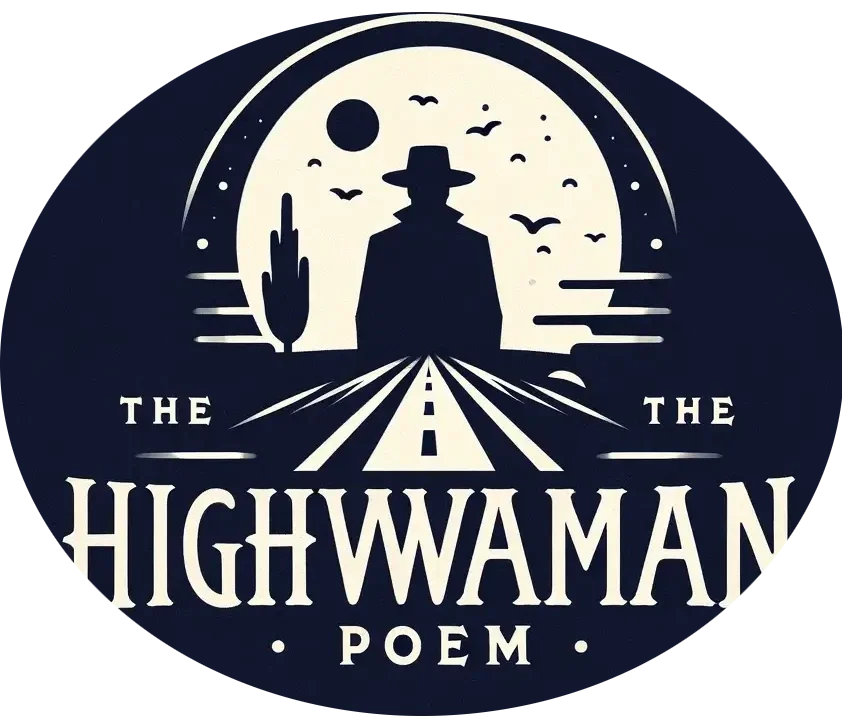Are you interested in delving into the enigmatic narrative of “The Highwayman”?
This article aims to lead you through an exploration of the author’s background, a comprehensive summary and analysis of the pivotal events and characters, the underlying themes encompassing love, sacrifice, and betrayal, as well as an examination of the literary techniques employed such as rhyme scheme, imagery, and symbolism within the poem.
Furthermore, we will delve into the enduring impact and various adaptations of “The Highwayman” in both literature and popular culture, alongside an assessment of critical reception and scholarly discourse surrounding the piece.
Let us embark on an insightful journey into the captivating realm of this timeless poem penned by Alfred Noyes.
What Is The Highwayman and Key Takeaways:
- The Highwayman is a famous narrative poem written by Alfred Noyes that tells the tragic love story of a highwayman and his lover Bess.
- The poem explores themes of love, sacrifice, and betrayal, using vivid imagery and symbolism to convey the intensity of the characters’ emotions.
- The Highwayman has had a lasting impact on literature and popular culture, inspiring adaptations in various forms such as plays, films, and music.
Author Information and Background
Alfred Noyes, born in 1880 in Wolverhampton, England, was a highly productive English poet renowned for his ballads and lyric poems, with ‘The Highwayman‘ standing out as one of his most acclaimed works.
Over the course of his literary career, Noyes authored several other notable works such as ‘Drake‘ and ‘The Golden Hynde,’ thereby demonstrating his versatility as a writer. His literary prowess captured the attention of Blackwood’s Magazine, where he made substantial contributions, thereby cementing his stature within the literary realm. Noyes’ impact on English poetry transcended his own compositions, serving as a source of inspiration for subsequent poets with his romantic and emotionally resonant style, which garnered admiration from both readers and critics.
Summary and Analysis of The Highwayman
“The Highwayman” narrates the story of a gallant thief who develops romantic feelings for Bess, the daughter of the innkeeper, leading to a sorrowful conclusion marked by betrayal and retribution.
Key Events and Characters
The primary characters in the poem are Bess, the daughter of the landlord; Tim, the jealous ostler; and the Highwayman himself, depicted as a romantic and tragic figure. The narrative centers around the Highwayman’s pledge to return to Bess at the inn, despite the imminent peril posed by the King’s men. Consumed by envy and a longing for Bess, Tim betrays the Highwayman by disclosing his intentions to the soldiers.
This act of treachery culminates in an emotionally impactful climax where Bess, in an effort to save her lover, sacrifices herself by intercepting a gunshot intended for the Highwayman. The spectral manifestation of the Highwayman’s spirit, lingering at the site of his demise, serves as a poignant symbol of the enduring strength of love and the adversities that may accompany it.
Themes in The Highwayman
“The Highwayman delves into profound themes of love, sacrifice, and betrayal, framed within a narrative of romance and tragedy that accentuates the emotional complexity of the poem.”
Love, Sacrifice, and Betrayal
Bess’s profound affection for the Highwayman leads her to make the ultimate sacrifice, while Tim’s act of betrayal is fueled by his unreciprocated love and envy.
Bess’s enduring dedication to the Highwayman is clearly illustrated by her readiness to confront peril and even endanger her own life to forewarn him of the Redcoats’ ambush. Conversely, Tim’s decision to betray the Highwayman to the authorities, driven by his jealousy and resentment towards Bess’s affection for the Highwayman, not only seals the fate of the Highwayman but also ruptures the trust that had previously existed among the three characters. These interconnected themes of love, sacrifice, and betrayal create an intricate tapestry of emotions that propel the narrative with a sense of urgency and tragedy.
Literary Techniques in The Highwayman
Alfred Noyes utilizes a diverse range of literary techniques in his work, “The Highwayman,” including vivid imagery, rhythmic alliteration, and a consistent rhyme scheme, with the purpose of enriching the poem’s emotional depth and narrative effectiveness.
Rhyme Scheme, Imagery, and Symbolism
The poem demonstrates a consistent and musical rhyme scheme, which is further enriched by Noyes’ adept use of alliteration and vivid imagery to craft a hauntingly beautiful narrative. For a detailed explanation of What Is The Highwayman About?, check out this reliable source.
The recurrent rhyme scheme not only imparts a rhythmic quality and structural integrity to the poem but also functions as a unifying element that fosters a coherent progression, effectively drawing the reader deeper into the unfolding narrative.
Moreover, the inclusion of alliteration serves to heighten the musicality of the poem, as the repeated consonant sounds interlace through the verses akin to a melodic thread.
Notably, the imagery employed in the poem is particularly evocative, with vivid depictions of the color red serving as a symbolic representation of passion, danger, and intensity.
Frequent references to moonlight within the poem symbolize mystery, illumination, and an aura of otherworldliness, thereby introducing layers of complexity to the overarching themes of love, loss, and yearning.
Impact and Adaptations of The Highwayman
“The Highwayman” has had a significant influence on popular culture, serving as a source of inspiration for various adaptations. These adaptations encompass a wide range of mediums, including Hollywood films, folk songs, children’s books, and allusions in renowned literary works such as “Anne of Green Gables”.
Legacy in Literature and Popular Culture
The legacy of The Highwayman extends beyond its original form into literature and popular culture, with noteworthy adaptations that include a Hollywood film featuring Philip Friend and Wanda Hendrix, as well as musical interpretations by Loreena McKennitt and Fleetwood Mac.
These adaptations provide a modern interpretation of the classic poem, introducing its themes of love, loyalty, and tragedy to contemporary audiences. For example, the Hollywood film offered a visual representation of the tale, capturing both the romance and peril inherent in the highwayman’s narrative. Musical renditions by artists such as McKennitt and Fleetwood Mac added emotional complexity by blending the poem’s haunting lyrics with captivating melodies.
Through a variety of creative interpretations, The Highwayman continues to resonate with audiences, ensuring the endurance of its timeless narrative across various artistic mediums.
Critical Reception of The Highwayman
Since its publication in Blackwood’s Magazine, The Highwayman has received critical acclaim for its poetic beauty and profound emotional resonance, establishing itself as a prominent work in both scholarly analyses and mainstream cultural discourse.
Reviews and Scholarly Analysis
The poem “The Highwayman” by Alfred Noyes has undergone extensive scrutiny and analysis by scholars, who have lauded Noyes for his adept use of language and his skill in eliciting profound emotions.
One notable critical review lauded Noyes for intricately interweaving themes of love, tragedy, and adventure to create a cohesive narrative that resonates with readers. Scholarly examinations often emphasize the poem’s rich imagery, with critics noting Noyes’ masterful portrayal of atmospheric details that imbue the story with vividness and realism.
While some critics have remarked upon the melodramatic nature of the poem’s plot, they also recognize its enduring popularity spanning generations. “The Highwayman” holds a significant position in academic literary discourse, frequently studied for its exploration of themes such as love, sacrifice, and betrayal. Its influence is evident in numerous literary works, inspiring writers to experiment with narrative structures and emotional depth in their own creations.
Frequently Asked Questions
What Is The Highwayman About?
The Highwayman is a narrative poem written by Alfred Noyes, first published in 1906.
What is the historical context of The Highwayman?
The poem is set in 18th century England, during a time when highwaymen were known for robbing travelers on the roads.
What is the main theme of The Highwayman?
The main theme of the poem is love and sacrifice, as portrayed by the tragic love story of the highwayman and Bess.
Who are the main characters in The Highwayman?
The main characters in the poem are the highwayman, Bess, and Tim the ostler. The king’s soldiers also play a significant role in the story.
What is the significance of Bess in the poem?
Bess is the love interest of the highwayman and her character symbolizes love, loyalty, and sacrifice.
Why is The Highwayman considered a ballad?
The poem follows the traditional form of a ballad, with a simple rhyme scheme, regular rhythm, and a narrative structure. It also uses repetition and shows a strong emphasis on emotion and storytelling.

